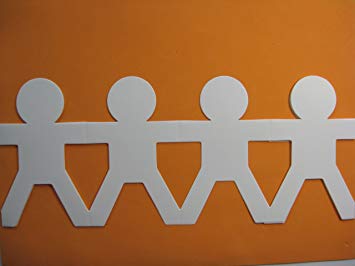Having opened any coursebook for primary learners you will encounter the “Family” topic. It is one of the most popular topics to discuss with children, it’s somehow covered at almost all the initial levels of English studies. First, kids learn to talk about mum and dad, then, what their brothers and sisters like doing and finally, they can tell you where their aunt and uncle live and what other relatives do on holidays. Here are some ideas to practise this vocabulary.
1. Where is aunt?
Firstly, elicit/pre-teach nuclear and extended family members: mother, father, sister, brother, aunt, uncle, cousin, grandmother, grandfather. You can do this using a picture. Then drill and write each word on a separate card.
Then, give each child a card/picture with their role, e.g. mother, uncle, etc. Check the children know the words “next to”, “between”, “behind”, “in front of”. The children mingle or run to music. When you stop the music, say, “mother is next to father”. The children with these cards stand in line, others continue running when you play the music again. Then you repeat this for other roles, e.g. sister is between the brothers. Have the correct order of the family members written beforehand to check at the end. You may appoint another student to call out the phrases, play the music and check the order.
The kids can exchange their roles and repeat the exercise if time.
As a follow-up activity you can ask questions “Where’s aunt/mother/brother/etc.?” and encourage different student to give answers.
2. Family portrait
Give the students the picture of a family. Say you will describe different family members and they need to label them, e.g. mother, father, etc. Make sure the students know the prepositions, colours, clothes and other vocabulary you will use while describing the family, e.g. “My mother is sitting next to me. She is wearing red dress. She has blond hair”. Tell the student to check in pairs, then check altogether in class. Use the same big photo, stick it on board and ask students to label family members on it to check the answers.
As a follow-up activity you can play the memory game. Unlabel the photo, point at family members at random and ask “Who is it?” (mother, aunt, etc.).
3. How many brothers?
Elicit/pre-teach the words “brother”, “sister”, “aunt”, “uncle”, “cousin”. Split the children in 5 group with the same names — brothers, sisters, etc. The groups mingle and count how many brothers, sisters, etc. each student in the group has, i.e. “brothers” group ask find out about brothers, “sisters” group about sisters, etc. Then you can create a diagramme of all family members.
As a follow-up activity each group can create a paper people chain to see which group has the longest chain.
 4. Family snap
4. Family snap
You need 5 sets of cards of 5 family members each for one student (25 cards in total, but you can vary this). Read out the names on the cards and hold them up, tell the children to repeat.
Demonstrate how to play the game:
- Each player has 5 mixed sets of cards with 5 family members.
- Players keep the cards face down and not look at them.
- Each player turns over one card and place it in the middle of the table saying the family member, e.g. father. Move clockwise.
- If the next player puts the same card down, the first person to shout “Snap! Father!” wins all the cards on the table.
- The winner is the one who has all the cards. The student should say “Win!”
5. Family collection
Elicit/pre-teach “Have you got…?”
The aim of the game is to collect 5 family members (e.g. mother, father, sister, brother, aunt)
Demonstrate how to play the game:
- Mix all the cards and give each player 5 cards. The player must decide what they are going to collect.
- One player asks the player on the right “Have you got a mother?”
- If that player has the card they must say “Yes” and give this card to the first player. The first player give them one of their card they do not want. If the player says “No” this is the end of their turn.
- The first player to collect the whole family of 5 members shouts “Win!” and puts all the cards on the table.






 Юлия Белоног
Юлия Белоног 
 Анна Тетерина
Анна Тетерина 
 Мария Коврова
Мария Коврова 
 Александра Лунева
Александра Лунева 
 Мария Лазарева
Мария Лазарева 
 Анастасия Яковлева
Анастасия Яковлева